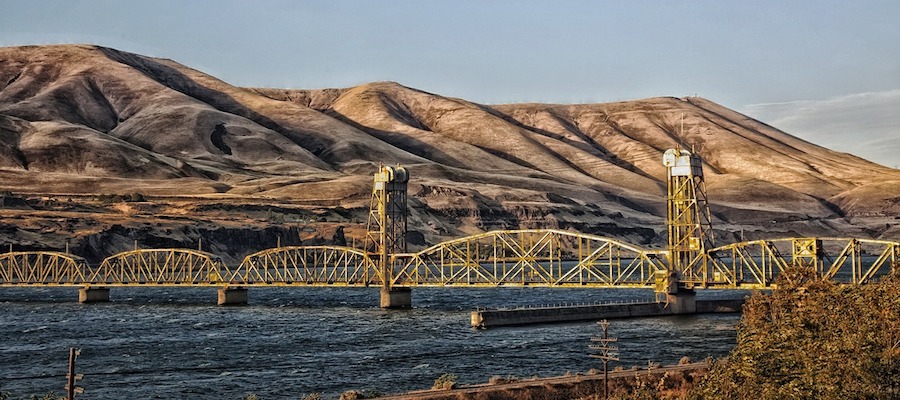How the so-called “Clean Energy Plan” still wreaks havoc on BC Hydro’s rates

My wife says I hold on to things too long. Still, when I read BC Hydro’s most recent rate application to the BC Utilities Commission (BCUC), I couldn’t help but recall Mark Jaccard’s spirited—if misguided—defence of Premier Gordon Campbell’s Clean Energy Plan in a critique of a paper, Lost in Transmission, that I co-authored in 2007.
BC Hydro is seeking approval for rate increases totalling 10.5% over the next three years (the maximum the government will allow under their ten-year rate plan), plus the deferral of some $800 million in costs—costs that will be charged to customers in the future—because the maximum rate increases allowed by the government are not keeping pace with BC Hydro’s rapidly increasing costs of service.
And what is underlying those increasing costs? BC Hydro’s application makes very clear that the single most significant factor is increased purchases from independent power producers (IPPs) – purchases that BC Hydro was forced to make as a direct result of Campbell’s Clean Energy Plan.
It was clear from the outset that the Clean Energy Plan would needlessly impose hundreds of millions of dollars of costs on BC Hydro.
These measures greatly increased BC Hydro’s need for new sources of electricity. And without missing a beat, the Plan dictated that the new supply would have to be acquired from “run-of-river”—a type of hydroelectric facility that operates with no significant storage facilities—and other clean sources developed by IPPs.
It was a remarkable intervention by government in the planning and development of the BC Hydro system. And yet none of it was supported by any serious analysis of the consequences, benefits or costs it would have.
There was no evidence that self-sufficiency and insurance were needed to ensure a reliable supply of electricity in the province or otherwise benefit the system. The fact that the government said BC Hydro couldn’t even rely on power produced under the Columbia River Treaty—which is owned by the province but produced in the U.S.—was clear indication the Plan was not about reliability or security of supply.
Nor was there reason to believe the Plan would yield significant environmental benefits. Shutting down the Burrard plant led only to minimal reduction in GHG and other emissions, due to the fact that while the plant played a very valuable back-up role, its actual operations were limited. Moreover, emission benefits from shutting down Burrard and reducing imports were offset (some would argue more than offset) by the impacts—bio-physical and otherwise—of the project developments in pristine wilderness areas that would take place as a result of the Plan.
In his defence of the Plan, Jaccard argued there would be economic benefits: new clean sources of supply would reduce BC Hydro’s exposure to high-price imports or purchases of gas it might otherwise have to make. He hypothesized a scenario where the savings from reduced imports would exceed the cost of the high-priced IPP supply the Plan forced BC Hydro to buy. But there was no reason to believe the scenario Jaccard put forward. To-date, his forecast of market prices hasn’t even been close to correct, and no one has been forecasting that anything like it will come to pass in the foreseeable future.
Emission benefits from shutting down the Burrard Thermal power plant and reducing imports were offset by the impacts of the project developments in pristine wilderness areas.
And now, as a consequence, these unnecessary and uneconomic purchases are driving the need for increased rates.
In Tables 4-9 and 4-10 in the rate application filed with the BCUC in late July, BC Hydro sets out the amount and cost of all of the IPP purchases it will be making each year from 2016 through 2019. Purchases just from the 2010 Bio-Energy and Clean Calls for Energy—purchases directly due to the Clean Energy Plan—are forecast to increase by almost 2100 Gigawatt-hour (GWh) or $270 million between 2016 and 2019.
That energy isn’t needed to meet BC Hydro’s requirements. In all likelihood it will be exported, generating revenues a fraction of the cost. The average cost of 2010 Bio-Energy and Clean Call purchases is between $125 and $130 per Megawatt-hour (MWh). BC Hydro’s latest forecasts suggest that its value in the export market will be one-quarter of that – some $30 to $35 per MWh. The net cost of the additional 2100 GWh of Bio-Energy and Clean Call energy that BC Hydro will be buying by 2019, after taking their export value into account, will be over $200 million in that year alone. And $200 million makes up over half of the total increase in costs underlying BC Hydro’s latest application for higher rates.
When Christy Clark took over from Campbell, the government quickly realized the problems with the Clean Energy Plan and, to its credit, it took steps to mitigate the damages. The government modified the self-sufficiency criterion from the extreme version Campbell put in place, it eliminated the requirement for insurance, and it directed BC Hydro to reduce its IPP commitments where possible. But the unnecessary purchase contracts and cost commitments had largely been made.
The Campbell government never bothered to analyze and assess the consequences its plan would have.
In defending its Clean Energy Plan, the Campbell government hid behind the so-called “obvious” benefits of self-sufficiency and development of “clean” sources of supply. It never bothered to analyze and assess the consequences its plan would have.
We run the risks of making similar mistakes today, particularly in the highly-charged and emotional public policy debates surrounding climate change. Before the government takes steps to electrify the oil and gas industry, it should undertake (or direct the BCUC to undertake) an analysis of the full range of economic and environmental impacts that would have. The costs per tonne of GHG reduction should be determined, and if those costs are high—especially if they are much higher than the carbon tax—the rationale for pursuing this policy should explicitly be addressed. Similarly, advocates of more government intervention and regulation should make their case as well, with fully transparent assessments of the costs per tonne of GHG reductions they would have government impose.
Arguing for policies just because they are perceived to be ‘clean’ isn’t good enough. The broad public interest will be far better served if we have some sense of how clean they will in fact be and at what cost.


